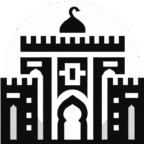Morocco, a North African gem, is an enchanting blend of ancient heritage and modern vibrancy, making it a top destination for travelers seeking adventure, cultural immersion, and historical wonders. Known for its diverse landscapes and unique customs, Morocco has something to offer every type of traveler. Let’s explore this beautiful country’s most compelling tourist attractions, with insights into its cultural treasures, popular destinations, and key tourism statistics.
1. The Rich Tapestry of Moroccan Culture
A Journey Through Moroccan Heritage and Identity
Morocco’s culture reflects a mix of Arab, Berber, African, and European influences, each contributing to the country’s distinctive identity. From the intricate architecture of the mosques and palaces to the melodies of traditional Moroccan music, the nation’s cultural heritage is celebrated globally.
Unique Traditions and Customs
Moroccan customs range from the vibrant Gnawa music of Marrakech to the spiritual Sufi chanting and the famous Moroccan hospitality embodied in tea ceremonies. Traditional clothing, like the djellaba and kaftan, symbolizes the country’s cultural richness and diversity, frequently highlighted during annual festivals like the Timitar Festival in Agadir, celebrating Amazigh and international music.
Language and Religion: Cornerstones of Moroccan Society
Arabic and Tamazight (Berber) are the official languages, while French is widely spoken, especially in business and tourism contexts. Islam, the dominant religion, influences many aspects of life, from family structure to traditional celebrations.
2. Tourist Destinations: A Visual Journey Through Morocco’s Diverse Attractions
Morocco’s cities and landscapes offer a captivating blend of historical and modern attractions. Below are some must-see destinations:
Marrakech – The Red City
A top attraction in Morocco, Marrakech is famous for its bustling souks, historic palaces, and vibrant street life. Jemaa el-Fnaa square comes alive with musicians, storytellers, and local vendors, offering visitors an authentic Moroccan experience.
Chefchaouen – The Blue Pearl
Nestled in the Rif Mountains, Chefchaouen is known for its striking blue-painted buildings and cobbled streets, drawing artists and photographers worldwide. This small town offers a serene escape from the busy cities and is perfect for immersing oneself in Moroccan culture.
Sahara Desert – A Journey to the Dunes
The Sahara Desert offers an unforgettable experience with camel trekking, desert camping, and breathtaking views of the endless dunes. Merzouga, a popular gateway to the desert, has become a must-visit for tourists seeking adventure and tranquility under the starry desert sky.
3. Cultural Insights (Aperçus Culturels)
Moroccan Arts and Crafts
Moroccan artisans are known for their craftsmanship, with souks in cities like Fez and Marrakech filled with handwoven carpets, intricate ceramics, and leather goods. The Fez tannery is one of the oldest in the world, attracting tourists eager to witness traditional leather-making.
Festivals: Celebrations of Moroccan Identity
Morocco’s cultural festivals draw large crowds every year. The Mawazine Festival in Rabat, one of Africa’s largest music festivals, showcases Moroccan and international artists, attracting hundreds of thousands of visitors.
Moroccan Cuisine: A Taste of Tradition
Moroccan food is world-renowned, with dishes like tagine, couscous, and pastilla offering a taste of the nation’s culinary artistry. Spices play a crucial role in Moroccan cuisine, with local markets selling vibrant mixes used to create flavorful dishes.
4. Morocco’s Tourism Statistics: A Thriving Industry
Morocco has established itself as a major tourism hub, with significant economic contributions from this sector. According to the Moroccan National Tourist Office (ONMT), the country welcomed over 13 million visitors in 2019, marking a record year. Though tourism was impacted by the global pandemic, the industry is on a promising path to recovery, with visitor numbers increasing steadily.
Key Statistics:
- Visitor Numbers: In 2019, Morocco attracted around 13 million visitors, and the number is projected to reach similar levels as global travel resumes post-pandemic.
- Economic Contribution: The tourism sector accounted for nearly 7% of Morocco’s GDP in 2019.
- Employment: Over 550,000 people are employed in Morocco’s tourism industry, highlighting its importance to the economy.
- Main Source Markets: France, Spain, and Germany are among the primary sources of tourists visiting Morocco, followed by emerging markets in the Middle East and Asia.
5. Practical Travel Information for Tourists
For those planning to visit Morocco, here’s what you need to know to ensure a smooth experience:
Climate and Best Time to Visit
Morocco’s climate varies by region; coastal areas experience a Mediterranean climate, while the interior deserts are hot and dry. Spring (March to May) and fall (September to November) offer the best weather for travel.
Currency and Expenses
The official currency is the Moroccan Dirham (MAD). Morocco is relatively affordable, especially compared to European destinations, making it attractive to budget-conscious travelers.
Conclusion: Morocco Awaits Your Discovery
Morocco offers a magical experience with its vibrant cities, scenic landscapes, and warm hospitality. Whether you are an adventurer, a culture enthusiast, or simply looking for a unique getaway, Morocco’s treasures promise unforgettable memories.
Sources
- Moroccan National Tourist Office (ONMT) – [Link to ONMT website for detailed tourism statistics and updates]
- World Bank Data on Morocco – [Link to World Bank website for economic and tourism data]
- UNESCO Morocco – [Link to UNESCO page on Morocco’s cultural heritage]



